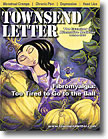Continued.
. . 1, 2, 3, 4, 5, 6, 7, 8, 9, 10, 11,
12

Live
Cell Injections
The intermuscular injection of fetal cells in FMS patients has improved
energy levels, reduced pain, decreased depression, and improved neurological
function in all patients.60
Discussion
The results of this open clinical outcome
study clearly indicate that a broad-base antimicrobial protocol (AMP)
will significantly reduce
the persistent pain and muscle weakness in the FMS patient (95.2%).
Although we are able to observe the various fungal forms (white,
black, red, brown) by High Resolution Microscopy as well as correlate
(from the literature) the symptoms of the fungal infection with the
symptoms of FMS, additional research is needed to define the specific
species of fungi as well as determine the role of mycoplasma, virus,
and bacteria also observed in High Resolution Blood Morphology (HRBM™).
The early FMS patients had a high reoccurrence of the FMS symptoms
within 30 days of the initial AMP. This reoccurrence was determined
to be a result of reinfection of the systemic system from two primary
sources. First, there were focal infections in the intestinal tract
resulting in reinfection of the systemic system. This problem was reduced
significantly by adding oral antifungal medication to the post-therapy
protocol.
Secondly, it was observed that quite a few of the male spouses of
the FMS patients showed the same high concentration of fungal forms
and mycoplasma in the blood as the patients. These male spouses had
some secondary symptoms of a minor nature (but without the classical
muscle pain and weakness), yet they were reinfecting their female
spouses. By treating the infected male spouses with the AMP, there
was a significant reduction in the reoccurrence of FMS. These observations
only confirm the basic premise based on microscopic evidence, that
FMS has a microbial cause, further confirmed by the reduction in
symptoms from antimicrobial therapy. See Chart
14.

Chart 14: Risk Factors for Reoccurrence
A. A localized infection in the intestinal tract.
B. Infected spouse carrier.
C. A deficient immune system.
D. Environmental factors - Sick building syndrome.
E. Lyme Disease

Summary
In summary, FMS represents a major burden in our society. Between three
to six million infected patients suffer from muscle pain and weakness,
fatigue, depression, heart abnormalities, and bowel dysfunction with
numerous other secondary effects. There is no approved treatment, and
traditional therapies have not resolved FMS. This limited open prospective
study clearly demonstrates the hypothesis that the etiology of fibromyalgia
is infectious microorganisms, predominantly fungal with possible synergistic
infection by mycoplasma, virus, and bacteria. A variety of risk factors
make reoccurrence of the disease a very real possibility. Carefully
planned studies can be designed to specifically investigate the role
of infectious organisms, toxicity states, and functional imbalances.
The results of such studies will undoubtedly shed more light on our
attempts to resolve this most perplexing disease.

Addendum
References

Correspondence
For comments or more information,
you may reach Dr. Bradford at 888-339-9355 or by email at rwbmc@hotmail.com. 
Acknowledgement
The authors wish to acknowledge the valuable contribution and meaningful
input of
Prof. Ann Marie Dixon, NMD, Albert MacKenzie, MD, Los Angeles,
California, Norbert Becquet, MD, Little Rock, Arkansas, and the staff
of Ingles Integrative Hospital, Tijuana, BC, Mexico.

Neither
this monograph nor any part may be reproduced or transmitted in any
form or by any means, electronic or mechanical, including
photocopying, microfilming, and recording, or by any information
storage and retrieval system, without permission in writing from
the authors.
© 2002/2006 Bradford Research Institute, Chula Vista, California 91911
The Bradford Research Institute has published over 75 research papers
and five textbooks on the etiology, biochemistry and therapeutic
implications of disease processes and their functional implications.

Continued. . . 1, 2, 3, 4, 5, 6, 7, 8, 9, 10, 11,
12 |



![]()
![]()

